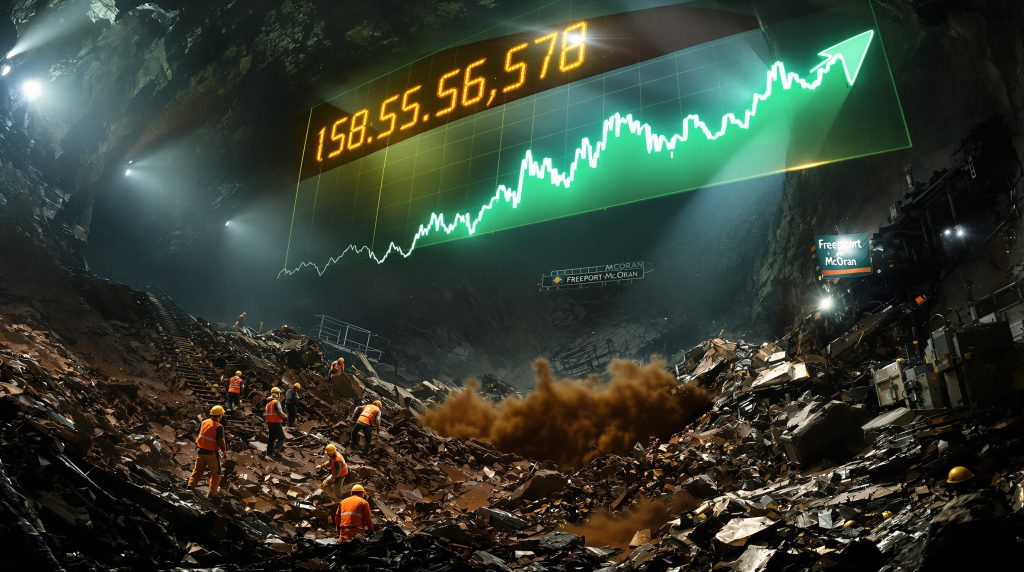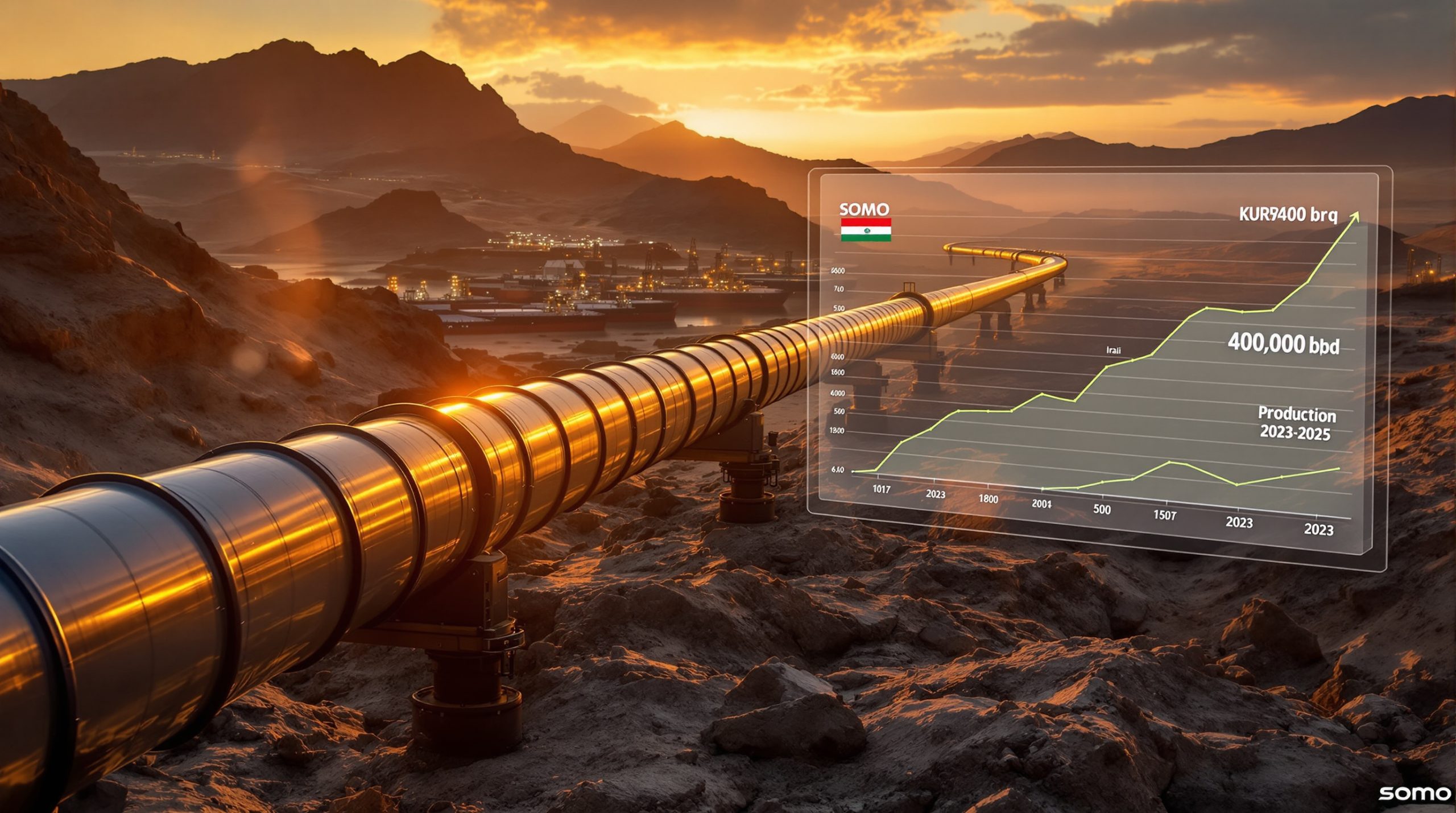Understanding Force Majeure at Grasberg Mine: Crisis, Impact, and Recovery Timeline
What Happened at Indonesia's Grasberg Mine in September 2025?
The mining world was stunned when a catastrophic mud rush event struck Freeport-McMoRan's Grasberg mine in Indonesia on September 8, 2025. This devastating incident involved approximately 800,000 tonnes of wet material suddenly flooding multiple mine levels, causing extensive damage to critical infrastructure and resulting in tragic human casualties.
The force of the rushing material affected crucial service areas throughout the mine, severely damaging rail systems, electrical installations, and mobile equipment across multiple levels. The immediate impact was so severe that Freeport-McMoRan completely suspended operations the following day on September 9, 2025.
The human toll has been significant, with two confirmed fatalities as of September 20, 2025, and five workers still missing as search efforts continued. The company prioritized search and rescue operations in the immediate aftermath, deploying emergency response teams to locate trapped workers.
The scale of the disaster prompted Freeport-McMoRan leadership, including board chairman Richard Adkerson and president and CEO Kathleen Quirk, to visit the site personally to support affected families and emergency response teams working under extremely challenging conditions.
This incident represents one of the most significant operational disruptions in recent mining market perspectives, affecting what is considered one of the world's premier copper and gold mining operations. The mud rush's sudden and overwhelming nature left little time for preventative measures, forcing the company into crisis management mode.
How Does Force Majeure Work in Mining Operations?
Force majeure, a legal provision meaning "superior force" in French, provides contractual protection when extraordinary circumstances beyond reasonable control prevent parties from fulfilling their obligations. In mining operations, this provision becomes particularly important when dealing with natural disasters, equipment failures, or other unforeseen events that halt production.
When Freeport-McMoRan declared force majeure at Grasberg mine, it initiated a formal legal process to notify commercial partners that contractual obligations—such as delivery schedules, production quotas, and supply agreements—would be temporarily suspended without penalty due to the exceptional circumstances.
For this declaration to be valid, several criteria typically must be met:
- The event must be beyond reasonable control of the declaring party
- The circumstance must not have been reasonably foreseeable
- The event must make performance impossible, not merely more difficult or costly
- The declaring party must take all reasonable steps to mitigate damages
Mining contracts often contain specific force majeure clauses outlining qualifying events, notification requirements, and the rights and obligations of all parties during the force majeure period. These provisions are carefully negotiated as they can significantly impact financial responsibility during operational disruptions.
Mining operations are particularly vulnerable to force majeure situations due to their complex operational requirements, remote locations, and susceptibility to geological and environmental factors. Similar declarations have occurred across the industry, from Chilean copper mines affected by earthquakes to Australian coal operations impacted by flooding.
The Grasberg declaration is particularly significant given the mine's global importance and the projected multi-year recovery timeline, potentially making it one of the most consequential force majeure situations in recent mining history.
Why is the Grasberg Disruption Significant for Global Copper Markets?
The Grasberg disruption represents a substantial shock to global copper supply chains due to the mine's extraordinary importance in world copper production. This single operation accounts for approximately half of Freeport-McMoRan's proven and probable reserves, while representing approximately 70% of PT Freeport Indonesia's projected copper and gold output through 2029.
Copper market specialists immediately recognized the significance of this disruption, particularly as it comes during a period of growing copper demand driven by the global transition to renewable energy and electric vehicles. Both sectors rely heavily on copper for electrical components, with an electric vehicle requiring up to four times more copper than a conventional vehicle.
The timing of this disruption is especially problematic for global copper markets. Industry analysts had already projected potential supply deficits in the coming years, with few major new mines scheduled to begin production. The loss of significant output from Grasberg—potentially extending through 2027—will likely exacerbate these supply concerns.
Beyond immediate market effects, the Grasberg situation highlights the vulnerability of critical mineral supply chains to single-point disruptions. This has significant implications for industries dependent on stable copper supplies, from electronics manufacturers to construction companies and renewable energy developers.
While alternative sources can potentially increase production to offset some losses, the grade and quantity of Grasberg's output make it particularly difficult to replace in the short term. The mine produces exceptionally high-grade copper concentrate that commands premium pricing in certain markets, according to copper price insights.
The projected 35% reduction in 2026 production compared to previous estimates represents a significant volume of copper removed from global markets during a critical period of growing demand, creating potential for sustained price pressure through the recovery period.
What Damage Assessment Has Been Completed at Grasberg?
The initial damage assessment at Grasberg reveals extensive infrastructure destruction across multiple mine levels, affecting critical systems necessary for safe and efficient mining operations. According to Freeport-McMoRan's preliminary analysis, the mud rush damaged crucial service areas that support the broader mining operation.
Rail systems throughout the affected areas suffered severe damage, compromising the mine's ability to transport ore efficiently from extraction points to processing facilities. These transportation networks represent a fundamental component of the mining operation, and their rehabilitation will require significant engineering resources.
Electrical installations across multiple levels were severely compromised, affecting power distribution, communications systems, and operational controls throughout the mine. Restoring these complex electrical networks will involve specialized expertise and substantial replacement of damaged components.
Mobile equipment losses have been substantial, with mining machinery worth millions of dollars rendered inoperable by the flooding material. This equipment includes specialized vehicles designed for underground mining conditions that may face long lead times for replacement due to their custom nature.
The most challenging aspect of damage assessment involves areas still inaccessible due to ongoing safety concerns, meaning the full extent of destruction remains partially unknown. Teams of mining engineers, geotechnical specialists, and safety experts are working to establish safe access protocols for comprehensive evaluation.
Freeport-McMoRan has engaged external experts to assist with the damage assessment and investigation process, which is expected to continue through the end of 2025. This extended timeline reflects both the complexity of the evaluation and the safety challenges involved in accessing certain areas of the mine.
The investigation will need to determine not only what physical damage occurred but also what geological factors contributed to the mud rush event to prevent similar occurrences during the recovery and beyond. This requires detailed analysis of rock mechanics, hydrology, and structural integrity throughout the affected mining areas.
How Will Production Recovery Be Phased Through 2027?
Freeport-McMoRan has outlined a multi-phase recovery strategy extending over approximately 18 months, with full production capacity not expected until 2027. This methodical approach reflects both the extensive damage and the complex nature of underground mining operations.
The initial recovery phase will focus on reestablishing operations in unaffected sections of the mine by late 2025. This approach allows for partial production resumption while more severely damaged areas undergo repairs. Safety considerations will dictate the pace of this initial restart, with extensive testing and monitoring systems implemented before allowing personnel to return.
The Grasberg Block Cave—a crucial component of the overall operation—is scheduled to begin a gradual ramp-up in early 2026. Block cave mining involves extracting ore from beneath an ore body, allowing gravity to cause the rock above to collapse into the void. Restarting this complex process requires careful engineering and safety protocols to prevent further instability.
Production forecasts indicate a 35% reduction in 2026 output compared to pre-incident projections. This significant decrease reflects both the physical limitations during recovery and the cautious approach necessary when restarting operations after such a major disruption.
The recovery timeline incorporates several critical milestones:
- Late 2025: Initial restart of unaffected sections
- Early 2026: Gradual ramp-up of Grasberg Block Cave
- Mid-2026: Expanded production as additional areas become operational
- 2027: Return to pre-incident production levels
This extended timeline reflects the reality that underground mining operations cannot simply restart at full capacity after major incidents. Each phase of recovery must balance production goals with worker safety, infrastructure integrity, and geological stability considerations.
The recovery strategy also includes implementation of enhanced monitoring systems and safety protocols developed during the investigation phase. These improvements aim to provide early warning of potential instabilities and prevent similar incidents in the future.
What Financial Implications Does This Event Create?
The financial impact of the Grasberg force majeure extends far beyond immediate production losses, creating ripple effects across Freeport-McMoRan's operations and the broader mining sector. The company faces a multi-dimensional financial challenge that will affect its performance through at least 2027.
Direct financial impacts include significant revenue losses from reduced copper and gold production, particularly in 2026 when output is projected to be 35% below previous forecasts. For a mine of Grasberg's size and grade quality, this represents a substantial reduction in expected cash flow.
Insurance recovery will play an important role in mitigating some financial impacts, though Freeport-McMoRan has noted this will be "subject to policy limits and deductibles." Mining operations typically carry business interruption insurance, but such policies rarely cover the full financial impact of major disruptions, particularly those extending over multiple years.
Capital expenditure requirements will increase substantially to fund the repair and replacement of damaged infrastructure, mobile equipment, and electrical systems. These unplanned expenditures may necessitate reallocation of capital from other projects or additional financing arrangements.
The force majeure declaration provides some contractual protection regarding customer commitments, but does not eliminate potential long-term commercial impacts. Customers may need to secure alternative copper supplies during the disruption period, potentially affecting long-standing business relationships.
Investor confidence has also been affected, as evidenced by market reactions following the announcement. Mining companies experiencing major operational disruptions often face short-term market pressure as investors reassess risk profiles and earnings potential.
Labor costs may increase during the recovery period as specialized teams work on rehabilitation projects while regular production staff stand by for operational restart. This creates a period of elevated expenses without corresponding revenue generation.
The extended timeline for full recovery means these financial pressures will persist through multiple reporting periods, requiring careful communication with investors, lenders, and other stakeholders about progress milestones and adjusted financial expectations.
How Is This Affecting Indonesia's Mining Sector?
The Grasberg disruption has significant implications for Indonesia's mining sector, affecting everything from national economic metrics to regulatory approaches. As one of the country's flagship mining operations, Grasberg's temporary reduction in output reverberates throughout Indonesia's resources economy.
The most immediate impact involves reduced mining royalties and tax revenues flowing to Indonesia's government. Grasberg represents a substantial contributor to national mining revenues, and the projected multi-year reduction in output will affect fiscal planning at both regional and national levels.
Employment impacts extend beyond direct mine workers to affect surrounding communities dependent on the mining economy. Service providers, suppliers, and local businesses that support Grasberg operations are experiencing reduced activity, creating economic pressure in regions with limited alternative employment opportunities.
Indonesia's copper export capabilities face significant constraints during the recovery period. As a major copper-producing nation, Indonesia relies on operations like Grasberg to maintain its position in global metals markets. The temporary reduction in export volume could affect trade balances and sector growth projections.
The incident may accelerate regulatory attention to mining safety standards throughout Indonesia. Government authorities are likely to examine whether current safety regulations, monitoring requirements, and enforcement mechanisms are sufficient to prevent similar incidents at other mining operations.
Local communities near the mine face particular challenges during this period, as many depend directly or indirectly on Grasberg for economic sustainability. Corporate social responsibility programs funded by mining revenues may face resource constraints during the recovery period.
The disruption also highlights Indonesia's vulnerability to single-point failures in its resources sector, potentially encouraging greater diversification in future development. This could include accelerated development of other mining projects or increased focus on downstream processing capabilities to enhance value creation across the sector.
Indonesia's reputation as a mining investment destination may experience short-term uncertainty as international investors assess whether the Grasberg incident reflects broader operational risks within the country's mining sector or represents an isolated event with limited implications for other projects.
What Safety Improvements Will Be Implemented?
Before resuming operations at Grasberg, Freeport-McMoRan must implement comprehensive safety enhancements to prevent similar incidents and protect workers during the recovery process. These improvements will draw on findings from the ongoing investigation and incorporate industry best practices for managing geological risks.
The investigation into root causes involves external experts specializing in geotechnical engineering, hydrology, and underground mining safety. This independent assessment aims to determine what specific factors contributed to the mud rush, whether early warning signs were present, and how detection systems might be improved to provide advance notice of future instabilities.
Enhanced monitoring systems for potential geological instabilities will be central to the safety improvements. These technologies may include:
- Microseismic monitoring networks to detect subtle rock movements
- Advanced hydrological monitoring to track water flow and pressure
- Real-time stress measurement systems to identify changing ground conditions
- Automated alarm systems with predetermined trigger points for evacuation
Revised emergency response procedures will incorporate lessons learned from the September incident, focusing on faster evacuation, improved communication during emergencies, and more effective search and rescue capabilities. These protocols will undergo rigorous testing before full-scale operations resume.
Safety training programs for all personnel will be updated to reflect specific risks identified during the investigation, ensuring workers at all levels understand warning signs, reporting procedures, and emergency response roles. This comprehensive training approach recognizes that human factors play a crucial role in mining safety.
Structural reinforcement in vulnerable areas of the mine will likely form part of the recovery plan, with engineering solutions designed to provide additional stability in zones identified as having higher geological risk factors. These physical improvements complement the monitoring and procedural enhancements.
Third-party safety audits will likely become more frequent and thorough, providing ongoing independent verification that safety standards are maintained throughout the recovery period and beyond. These reviews offer valuable external perspective on operational practices and potential blind spots.
The safety improvements developed at Grasberg may ultimately benefit the broader mining industry, as lessons learned from major incidents often drive safety innovations that become standard practice across similar operations worldwide. This knowledge transfer represents an important, if unfortunate, advancement mechanism for mine reclamation trends and mining safety.
What Are the Long-Term Market Implications Through 2027?
The Grasberg disruption creates significant long-term implications for copper markets extending through the recovery period and potentially beyond. Market analysts anticipate several key developments as the situation unfolds through 2027.
Copper prices are likely to experience sustained upward pressure during the recovery period, particularly if global demand remains strong. The removal of significant supply from a major producer creates market tightness that typically supports higher prices, especially for high-grade copper concentrates where Grasberg has been a significant contributor.
Supply chain adjustments will occur as copper consumers seek alternative sources during the disruption period. This may benefit other major copper producers who can increase output, though few operations can match Grasberg's volume and grade quality in the near term.
The supply gap created by reduced Grasberg output may accelerate development timelines for copper projects currently in the planning or early development stages. Higher copper prices improve the economic viability of marginal projects, potentially bringing new supply to market faster than previously anticipated.
Downstream industries heavily dependent on copper—including electric vehicle manufacturing, renewable energy development, and construction—may face input cost pressures and potential supply challenges during this period. Companies with less secure supply chains could experience production constraints if copper availability tightens significantly.
Inventory management will become increasingly important for copper consumers, with forward-thinking companies likely to increase safety stocks where financially feasible. This behavioral change could temporarily exacerbate market tightness as companies build larger inventories to buffer against supply uncertainties.
Trading patterns may shift as market participants adjust to changed supply fundamentals. Increased price volatility could create both challenges and opportunities for copper traders navigating the uncertain recovery timeline.
Investment patterns within the mining sector may evolve in response to the Grasberg situation, with increased attention to operational risk factors, redundancy planning, and safety protocols. Capital markets tend to reward companies demonstrating robust risk management after major industry disruptions highlight vulnerability points.
The long-term pricing implications extend beyond the immediate recovery period, as the Grasberg disruption affects development decisions throughout the copper supply pipeline. Projects delayed or accelerated in response to current market conditions will influence supply availability for years beyond the immediate recovery timeline, potentially creating new opportunities for copper investment strategies.
FAQ: Critical Questions About the Grasberg Force Majeure
What exactly is a "mud rush" in mining terminology?
A mud rush in mining refers to a sudden, uncontrolled flow of liquefied material into mine workings. These events typically involve a mixture of water, soil, and rock fragments that behave as a viscous fluid when mobilized. Mud rushes occur when geological conditions create unstable situations where material can become saturated with water and then suddenly move when triggered by mining activities or natural factors like seismic events.
In block cave mining specifically, mud rushes present particular dangers as the extraction method creates void spaces that can potentially fill with mobilized material. Prevention typically involves careful monitoring of ground conditions, water management systems, and strategic mine planning to avoid creating conditions conducive to sudden material movement.
How does force majeure affect Freeport's contractual obligations?
When Freeport-McMoRan declared force majeure, it activated contractual provisions that temporarily suspend certain obligations to customers, suppliers, and other business partners. This legal mechanism provides protection from penalties or damages that would normally apply when contractual commitments are not fulfilled.
The specific impacts depend on individual contract terms, but typically include relaxed delivery schedules, postponed production quotas, and extended timeline allowances. This declaration does not permanently eliminate obligations, but rather suspends them during the extraordinary circumstance period. Once the force majeure condition ends, contractual obligations generally resume according to terms specified in the agreement.
Importantly, force majeure declarations require formal notification to affected parties, documentation of the extraordinary circumstances, and ongoing communication about recovery progress. Freeport-McMoRan has confirmed it has notified its commercial partners as required under its contractual obligations.
What percentage of global copper supply does Grasberg represent?
While specific percentages fluctuate based on global production levels, Grasberg ranks among the world's largest copper producers and represents a significant portion of global high-grade copper concentrate supply. The operation produced approximately 1.2 billion pounds of copper in 2023, making it a crucial component of global copper markets.
Beyond raw production figures, Grasberg's importance is magnified by its production of high-grade copper concentrate that contains valuable gold credits, making its output particularly desirable for certain applications and markets. This qualitative factor means its market impact exceeds what pure tonnage figures might suggest.
The mine's significance also stems from its projected long-term production profile, with substantial reserves supporting operations for decades to come. This long-term outlook makes temporary disruptions particularly impactful for market planning and supply forecasts.
Will this incident affect copper prices long-term?
Market analysts anticipate elevated copper prices through at least 2026 as the supply disruption from Grasberg creates tighter market conditions. The duration and magnitude of price impacts will depend on several factors:
- The actual timeline of Grasberg's recovery compared to current projections
- Global copper demand growth, particularly in electric vehicle and renewable energy sectors
- Development progress at other major copper projects worldwide
- Inventory levels throughout the supply chain when the disruption began
- Macroeconomic conditions affecting overall commodity demand
Long-term pricing beyond the immediate recovery period may experience continued support if the Grasberg disruption delays capital investment in other copper projects or accelerates depletion of alternative sources that increase production to fill the supply gap.
The copper market tends to be forward-looking, so price impacts may begin to moderate as Grasberg approaches full recovery, even before production actually normalizes. This anticipatory pricing behavior sometimes creates opportunities for market participants who accurately forecast the actual recovery timeline versus market expectations.
What safety measures were in place before the incident?
Freeport-McMoRan had implemented standard industry safety protocols at Grasberg prior to the incident, including ground control management systems, monitoring technologies, and emergency response procedures. Block cave mining operations typically employ specialized monitoring to track ground movement, water infiltration, and structural stability.
The ongoing investigation will determine whether these measures were adequate for the specific geological conditions at Grasberg, properly maintained, and correctly followed during operations. Initial reports have not indicated specific safety failures, focusing instead on the extraordinary nature of the mud rush event.
Modern mining operations like Grasberg typically employ multiple layers of safety systems, including geotechnical monitoring, hydrological controls, regular safety inspections, and comprehensive emergency response training. The investigation will examine each of these elements to identify potential improvement areas for the recovery phase and future operations.
The Path Forward for Grasberg
The force majeure at Grasberg mine represents a significant challenge for Freeport-McMoRan, Indonesia's mining sector, and global copper markets. The multi-year recovery timeline will require sustained commitment to safe restoration of operations while balancing commercial pressures and stakeholder expectations.
As investigation findings emerge and recovery efforts advance, the mining industry will gain valuable insights into managing similar risks at other operations. While the immediate focus remains on locating missing workers and securing the site, the longer-term implications will shape mining practices, commodity markets, and regulatory approaches for years to come.
The situation highlights both the vulnerability and resilience of global mineral supply chains, reminding market participants that contingency planning remains essential even for flagship operations with extensive safety protocols. As recovery progresses through 2027, Grasberg's experience will likely influence data-driven mining operations far beyond Indonesia's borders.
Interested in Identifying the Next Major Mining Discovery Before the Market?
Discover why major mineral discoveries can lead to significant market returns by exploring Discovery Alert's dedicated discoveries page, where real-time alerts powered by the proprietary Discovery IQ model turn complex mineral data into actionable investment insights for ASX mining opportunities.




